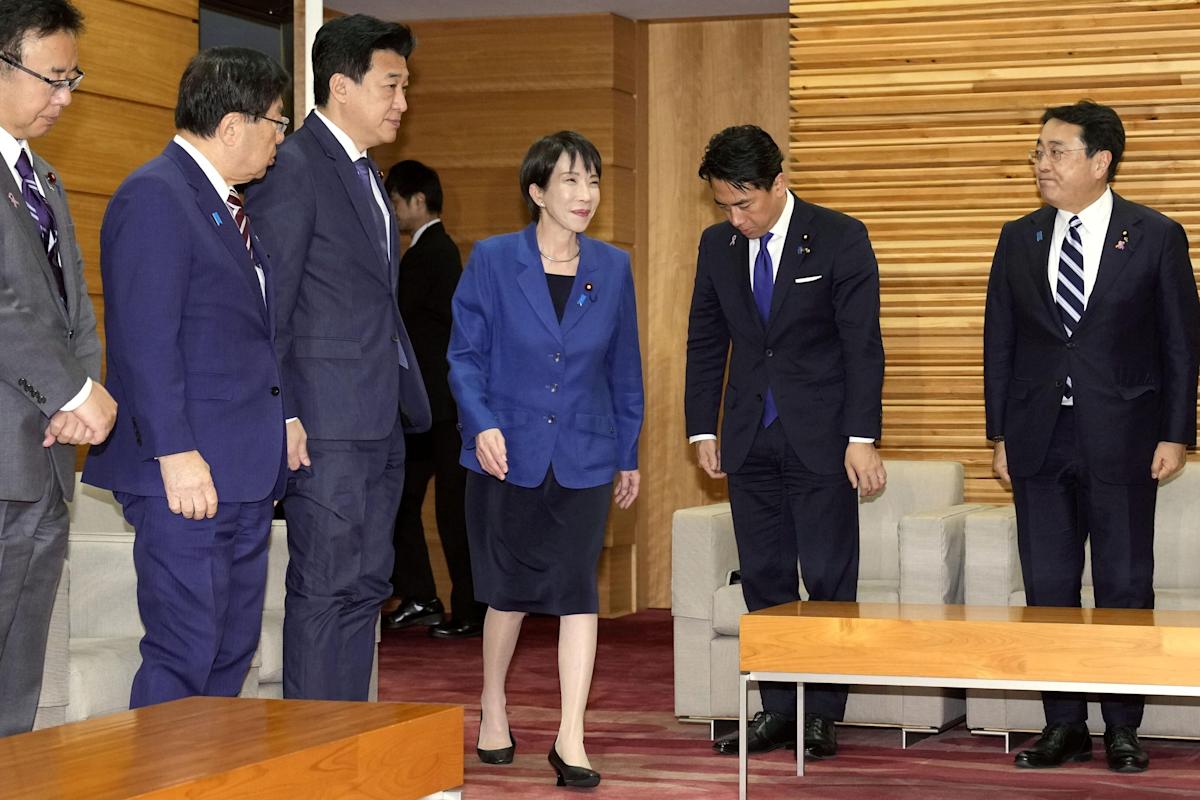Japan OKs $135 billion stimulus package to help revive its sluggish economy
TOKYO (AP) — Japan’s Cabinet approved a 21.3 trillion yen ($135.4 billion) stimulus package Friday to help spur the economy through expansionary government spending and to relieve the impact of higher prices.
After taking office last month, Prime Minister Sanae Takaichi promised to boost government spending despite concerns that such moves will delay progress on trimming Japan’s national debt, which is about triple the size of its economy.
The spending package far exceeds those of the pre-COVID-19 pandemic years and is also meant partly to blunt the impact of higher U.S. tariffs on Japanese exports to America under President Donald Trump.
Exports to the U.S. fell in October for the seventh straight month, the government said Friday, though shipments to the rest of the world rose 3.7%, thanks partly to higher exports to the rest of Asia.
In recent days, investors have sold off Japanese government bonds, pushing yields higher, while the yen has fallen to nearly its lowest level this year.
Share prices have also taken a hit from renewed friction with China after Takaichi made comments that angered Beijing, provoking retaliatory moves including an advisory warning Chinese tourists and students against going to Japan.
The lavish spending package approved Friday includes subsidies for energy costs, a cut in the gasoline tax and other measures to help consumers struggling with the rising cost of living. The government reported Friday that core inflation excluding volatile food costs was 3% in October, higher than the central bank’s target of around 2%.
Specific subsidies include one-time cash handouts of 20,000 yen (about $130) per child, which would require about 400 billion yen ($2.6 billion) in government funding and issuing rice vouchers or other coupons worth 3,000 yen (about $20) per person, to be distributed by local authorities.
Takaichi’s government must compile a supplementary budget and gain approval by the parliament by the end of this year to fund the package. That’s a major challenge for her ruling coalition, which lacks a majority in both the Upper and Lower houses of the Diet.
Takaichi succeeded former Prime Minister Shigeru Ishiba, who was virtually ousted by his rivals in the ruling party after losing major elections due to voter dissatisfaction over his minority government’s slow response to soaring prices and lagging wages.
As Japan’s first female prime minister, Takaichi has so far enjoyed high levels of public support largely because of expectations she might shake up Japan’s gerontocratic politics. But since she has a minority government, she needs cooperation with opposition parties to get her supplementary budget and spending package passed.



Leave a Comment
Your email address will not be published. Required fields are marked *